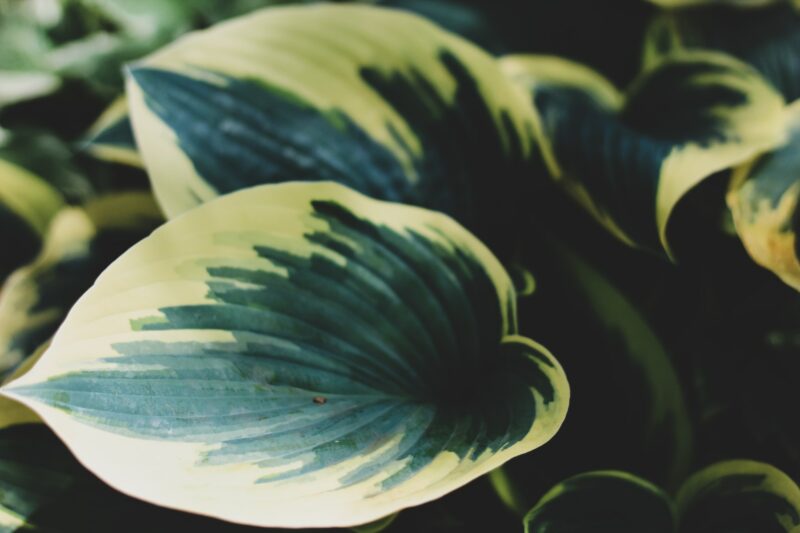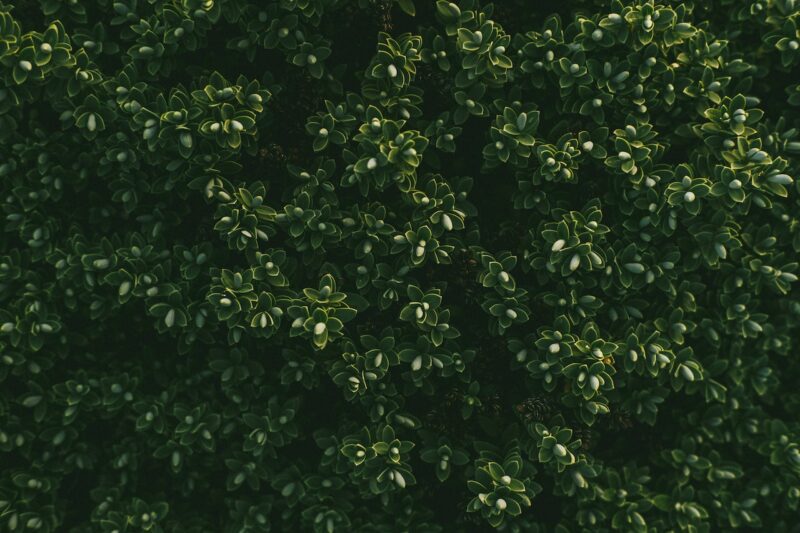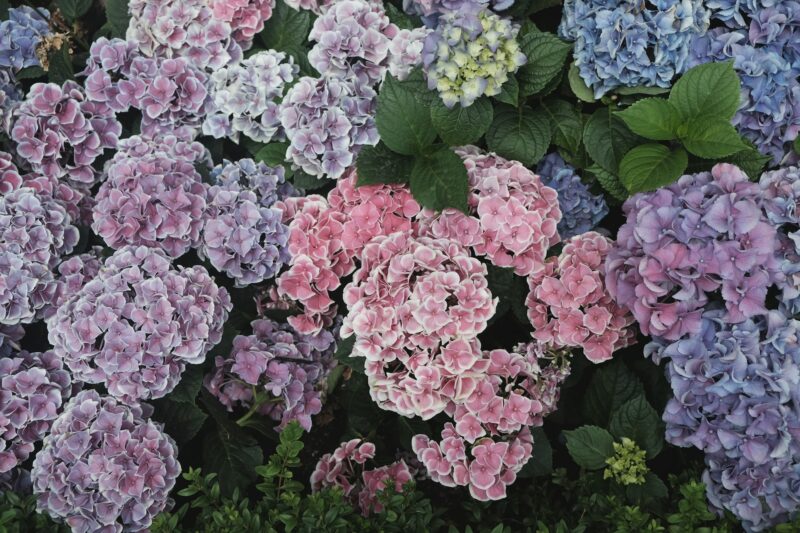
Hydrangeas are a group of flowering plants that range from shrubs to small trees and are either deciduous or evergreen. Also known as hortensia, the color of its beautiful flowers change color depending on the pH of the soil. Hydrangeas are striking flowers that are frequently used as ornamentals, especially in formal events such as weddings. However, its roots and leaves have also been used to brew tea, and even historically has been used as medicine.
This plant usually flowers for quite a long period, from early spring to late autumn. Most types of hydrangeas grow two flowers: small, fertile ones in the center and large, sterile, flowers with colorful sepals. Hydrangea flowers also usually manifest in two forms: mophead flowers, in which the flowerheads are large and fluffy; and lacecap flowers, which have round, flat flowerheads with a center of smaller flowers and a periphery of larger flowers.
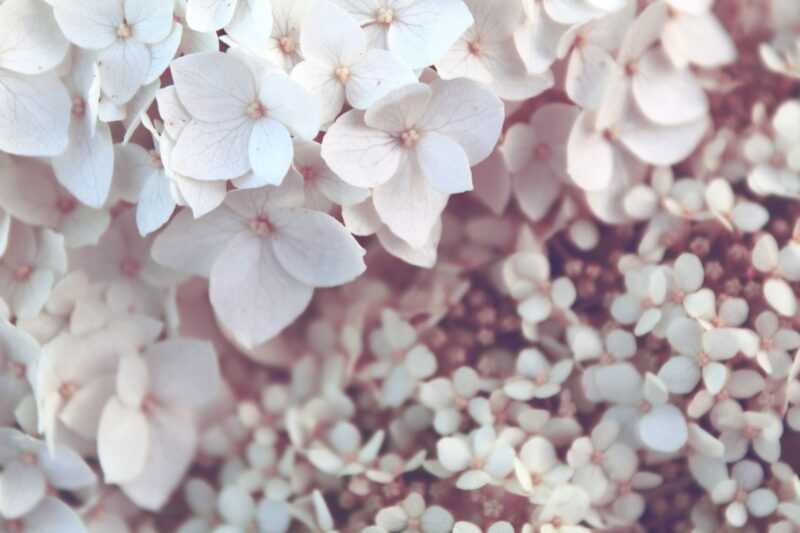
Flower color is somewhat dependent on soil pH. Its flowers are blue when the soil is acidic and pink when the soil is alkaline, although most flowers of this species are white. In addition, the color saturation is also determined by genetics, which means that its range of colors go from pinks to purples and blues for hue, but the saturation can be anywhere from pale to deep rich colors. To manipulate colors, you may add to the soil organic materials such as coffee grounds, citrus peels, or eggshells, to make soil more acidic. Sulfur or peal moss also makes soil more acidic. To get more pink flowers, ground limestone can instead be added.
Growing hydrangeas
Hydrangeas can be rather easy to cultivate, as they are hardy and resistant to most pests and diseases. Planting hydrangeas should be done in the spring, after you are certain that the frost is gone, or in the fall to give the shrub adequate time to develop healthy roots. The plant should be watered thoroughly after planting, and mulch can be added to prevent dehydration. Hydrangeas usually do best in full sun or partial shade, and so they should be planted in areas where there are warm mornings and cooler afternoons, such as on the north and south aspects of your property. Planting hydrangeas under trees is not advised, as this can lead to competition for water and nutrients. At the same time, hydrangeas cannot be planted without some degree of protection, as too much wind can damage its leaves and flowers.
Hydrangeas should ideally be planted in rich, moist soil that drains easily. Compost can be added to make the soil richer. When planting rootballs, it is best to give around 2 feet of space around it and to cover it properly with a mound of soil. During especially warm temperatures, hydrangeas benefit best from deep watering at least once a week, as well as some fertilizer up to twice a year in either the spring or summer.
If you don’t have enough space to plant hydrangeas in your garden, fear not! You can grow hydrangea in the pot, one that is at least 18 inches in diameter and that is non-porous to help maintain moisture levels. For small places, dwarf hydrangea varieties can be cultivated.
Replanting can be done during its period of dormancy in late fall or winter. This is accomplished by isolating the complete rootball, relocating it, and pruning hydrangeas to encourage new growth. The timing of the pruning usually depends on the species and on the amount of room for growth; for example, some are best pruned in the spring, and others in the late summer, while hydrangea vines do not normally require pruning. Should you need to deadhead hydrangeas, the fresh flowers can be cut and used.
Landscaping Use
Hydrangeas are wonderful plants to use as ornamentals, but there are other creative ways you can incorporate hydrangeas into your garden. For example, some species like the paniculatas can reach up to 15 feet tall; this kind is good to be used as hedges to afford your space from privacy.
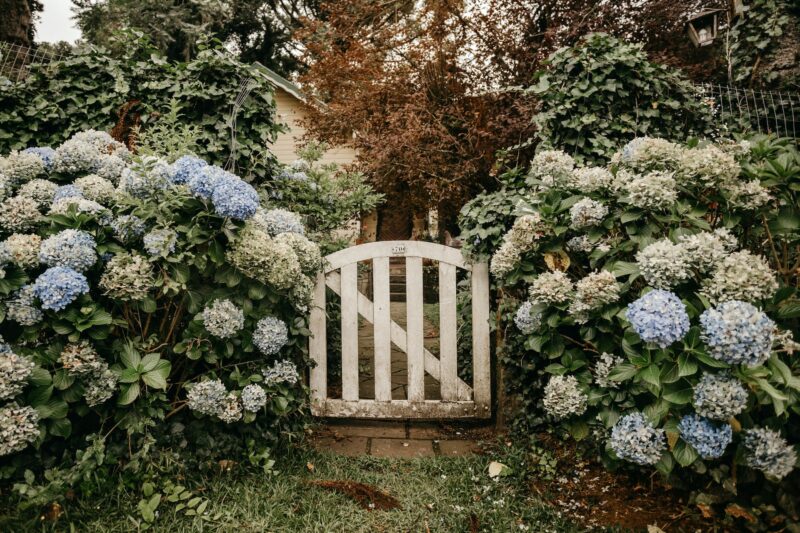
You can also add short hydrangeas to a fairy garden, combined with a moss carpet and other woody plants, to create a magical spot. Hydrangeas, with their showy and bold flowers, can be used as a focal point in a display in your garden. If you prefer something a bit more extravagant, can even be used to line a walkway on both sides by planting symmetrical plants. Lacecap varieties offer a lovely, vintage feel to your walkway. These flowers can also be used behind stone and concrete work, which tend to be drab and harsh on the eyes, to add some beauty. These plants work well with borders, as they seldom need pruning except for size.
If you have gazebos or pergolas in your garden, hydrangeas can be used to surround or line the transition from this structure to the rest of the grass. The vine (climbing) variety can also be used to accentuate the pergola.
Wherever you decide to put your hydrangeas, you can be sure that it will brighten up that spot!
Here to help
If you need assistance choosing and caring for hydrangeas in your garden, contact us at Likas Landscaping to discuss your options. We assure you that we will leave your landscape better than before!

